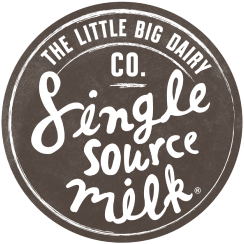There was a time in the 1980s when low-fat or fat-free products were preferred to higher-fat items. The avoidance of fat, in fact, was preached by many health experts.
Attitudes have changed somewhat, with many believing that a degree of fat is not a bad thing. However, consuming large quantities of fat is not recommended, and we need to be selective in what we choose.

Full Fat or Low Fat — Which is Best?
Monounsaturated and polysaturated fats are generally considered to be good fats, while saturated is thought to be unhealthy. The good fats are common in items such as oily fish, nuts and olive oil while milk and dairy products tend to mainly have saturated fats.
Milk, whether full-fat or reduced fat, is a useful source of protein, potassium, and calcium, with the amounts being roughly the same in each type. However, removing or reducing the amounts of fat in milk does cause a loss of some vitamins, although vitamins can be added back using a process known as fortification.
Medical recommendations are that those on a typical diet of 2,000 calories a day should not exceed twenty grams of saturated fat each day. Since a cup of whole-fat milk will normally contain around 4.5 grams of saturated fat, this can imply that four cups of whole fat milk each day are acceptable. However, this needs to be balanced against the intake of saturated fat from other sources, such as from red meat.
Whole fat, or full cream milk, does, however, have a place in everyone's diet. It is, in fact, recommended for young children to help their development.
Low-fat milk can appear to be a good option for those who are trying to lose weight, although it is not as straightforward as it appears. For one thing, low fat milk has added sugar that won't help weight loss. Additionally, the thicker content of full cream milk tends to make people feel full after consuming it so they are less likely to want to eat.
Achieving the Right Balance
Dairy products should generally be included as part of a healthy diet because of the benefits they offer, and these products can include whole fat milk as well as low fat varieties. The challenge is to get the balance right and that is helped by consulting the label on each product, which will show the quantities of all ingredients and additives.
A good balance will be to have a glass of low-fat milk and a full-fat yoghurt or whole-fat milk combined with a low-fat dessert. Whole fat milk undoubtedly has a better taste than low fat and can be used in coffee and on cereals. By checking food labels, you can aim for a level of three grams of saturated fat per food serving as a maximum although, if you have a heart condition or high cholesterol, two grams will be more sensible.
Balance taste against health, enjoyment against well-being, and stick to the guidelines. When choosing quality milk products, consider The Little Big Dairy Co, which offers both full-cream and reduced-fat options with transparent labelling, allowing you to make informed decisions about your dairy consumption while enjoying superior taste and nutritional quality.






